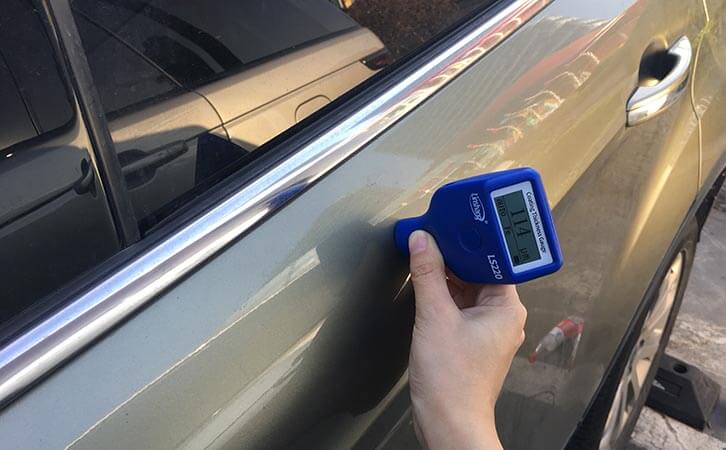Anticorrosive Method for Automobile Metal
1. Automotive metal anticorrosion method one: blue treatment of steel parts
When steel parts are heated in air-water vapor or chemical drug solution to a certain temperature, a black or blue oxide film will be formed on the surface, thereby improving the corrosion resistance of steel parts. This process is called bluing. For example, if a steel part is put into a solution of oxidant (NaNO2, NaNO3) and caustic soda and maintained at a temperature of 140-150 ° C for 60-120 minutes, a layer of porous oxide mainly composed of Fe3O4 will be formed on the surface of the steel part. This film is firmly bonded to the metal surface. After immersion treatment to fill the pores in the oxide film, it can effectively resist the corrosion of corrosive gases. Blue treatment is widely used in anti-corrosion of automobile mechanical parts and automobile instrument parts.
2. Automobile metal anticorrosion method two: galvanized
Zinc is a kind of off-white metal. It is very stable in dry air. It easily interacts with carbon dioxide and oxygen in humid air to form a zinc carbonate and zinc oxide film. This film can prevent zinc from further damage. Zinc has a lower electrode potential than iron and can protect steel parts. At present, galvanizing is widely used in automotive steel parts working in the atmosphere and steel parts in contact with aluminum alloys.
3. Automobile metal anticorrosion method three: anodizing method of aluminum alloy parts
An aluminum product is placed on the anode of a sulfuric acid electrolyte tank. An electric current is passed to form an oxide film on the surface of the part. This method is called anodization.
The oxide film formed by the anodizing method is firmly combined with the base metal, which not only improves the corrosion resistance of aluminum products, but also increases the wear resistance of the surface. Due to the porous nature of the oxide film, it has a strong ability to adsorb paint and is a good paint primer. The pores of the oxide film can also absorb various dyes. The surface can be obtained with various beautiful colors after coloring and filling treatment. The anodizing method is widely used for anticorrosion of various aluminum parts on automobiles.
4. Automobile metal anticorrosion method four: passivation anticorrosive treatment
The body part has a metal surface. When the metal surface is not less than 90% by metal surface area and is composed of zinc, magnesium and aluminum or an alloy of these metals with each other or an alloy with other alloy elements. In this method, the vehicle body is cleaned, passivated and painted. The vehicle body is brought into contact with an aqueous solution for passivation. For copper parts in automobile instruments, such as screws, gaskets, gears, etc., copper is often used. It is to immerse copper parts in oxidant (chromium salt and sulfuric acid mixed solution) solution for 2-3 minutes. The surface of the part will form a passivation film with high chemical stability, thereby improving its anticorrosive ability. The passivation and anticorrosive treatment is economical, simple to operate and does not affect the size of parts, so it is widely used in the automobile manufacturing process.
5. Automotive metal anticorrosive coating thickness detection
LS220 car paint meter
Anti-corrosion of automobile metal is important, but in the process of automobile anti-corrosion, the detection of the anti-corrosion coating thickness on the automobile metal surface is also an indispensable step. Because the coating thickness is an important indicator of whether the anticorrosive coating works. Measuring the coating thickness with a car paint meter is one of the most important quality inspection indicators for automotive anticorrosive coatings. Linshang LS220 car paint meter uses magnetic thickness measurement and eddy current thickness measurement principles, which can be used to measure the non-magnetic coating thickness on the surface of magnetic substrates . It can also be used to measure the thickness of non-conductive coatings on non-magnetic metal surfaces. The instrument adopts a separate design of the host and the probe, which is very suitable for the narrow space of the steel frame. It is very convenient to view the data while measuring in complex environments. This instrument has the characteristics of fast response speed, high measurement accuracy, stable zero position without drift and durability. The coating thickness measurement is simple and convenient whether indoors or outdoors.
- How to Detect the Bolt Plating Thickness with Plating thickness Gauge?
- Transmittance Meter Measure Transmittance of Frosted Glass
- How Much do You Know about Auto Paint Thickness Gauge?
- Current Status of Magnetic Paint Thickness Tester
- Difference between LS125 +E395 and LS128 UV Energy Meter
- Companre LS117 Optical Density Meter With Others
